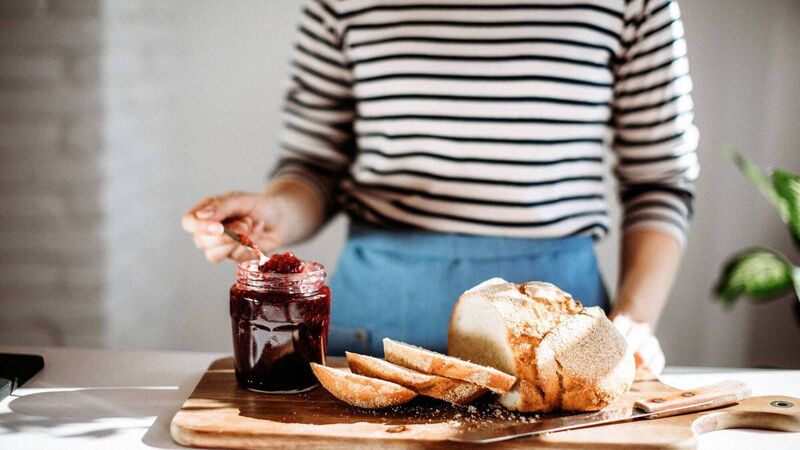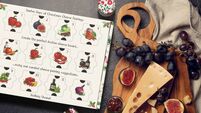Eimear Hutchinson: I've upped my game in jam making... here's what I've learned

Close-up of unrecognizable woman making bread toast with jam
IF you’ve read this column for any length of time, you’ll know I’m a fan of old-fashioned skills. I’m also a huge fan of constantly challenging myself to learn new skills and, in turn, hoping I’ll inspire my girls to consider these skills when they get older.
I dabbled with jam-making towards the end of last summer when the crop of blackberries I passed everyday while walking the dog was too much to resist.
Coinciding with the blackberries, our apple tree had finally started to produce an abundance of apples, and there are only so many iterations of apple and blackberry pie, tart and crumble you can bake before it gets tiresome.
She was very talented at knitting and crocheting, she also sold her wares at a few fairs, and I’m very grateful she passed on both skills to me.
She used to grow a large crop of strawberries out the side of her house, many of which used to end up simmering away in a preserving pan towards the end of the summer. Of course, she was a keen baker as well so I have many happy memories of sitting around her table, her at the top and many uncles, aunts and cousins all sitting around, chatting loudly (they’re from Kerry after all!) and chomping down on thick slices of her homemade brown bread with generous dollops of her homemade strawberry jam on top. Happy memories.
The first useful rule of thumb when making jam is that the ratio of sugar to fruit should be 1:1.
Making jam really is as simple as boiling fruit in sugar and leaving it until it reaches its setting point. Initially, I was put off jam-making as I thought the setting point was an elusive target I’d never find and I’d be left with pots of runny jam. In fact, it’s not hard to work out the setting point and the easiest method I’ve come to rely is the plate test. As you are prepping your ingredients, place two side plates in the freezer. Make your jam as per whatever recipe you are following, and when you get to a point when you think you are done, use the plate test to see if you have reached the end point.
Take one plate out and smear about a teaspoon of jam onto the plate. After a couple of seconds, if you push the jam with your finger tip, it should wrinkle ahead of your finger. If it does, you know your jam has reached its setting point, and if it still seems runny on the plate, simmer your jam for another 15 minutes or so and try the test again.
Bolstered by last year’s jam-making success, I was ready to really up my game this summer. The introduction of the polytunnel to our garden combined with the fact I was away visiting family at various stages throughout the summer, meant that I had large gluts of fruit and vegetables to deal with whenever I was at home.
The apple tree is producing so much this year, it has actually tipped over under the weight of all the apples, so apple jam was an obvious choice, but I decided to add a secret ingredient - courgette! And it worked really well, I called it Apple and Lemon Jam and so far no one has been able to pick out the courgette in the jam. I have also made normal apple jam, lots of blackberry and apple jam and numerous chutneys.
The nicest jam I’ve made so far is, without doubt, a tomato and chilli jam from Hugh Fearnley-Whittingstall. I didn’t go crazy with the chilli so it’s more sweet than spicy and I didn’t quite get it to set correctly so it’s a little runny in texture, but that doesn’t matter. It is the most beautiful accompaniment to cheese and crackers so I’ll be whipping up another batch with my next glut of tomatoes.
Making jams, sauces and chutneys is a great way of turning a simple fruit or vegetable into something much more valuable and long-lasting. It is also such a versatile condiment, we all know how good it is on bread and scones, but in our house we use it on yogurt and fruit, in porridge and in cakes, so it certainly won’t go to waste.
Chutneys get better the longer they are left sitting, so if you make some jars now, add a touch of cinnamon and they’ll be perfect for Christmas gifting.






 App?
App?





